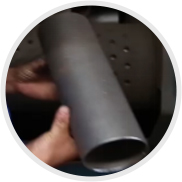 Afrikaans
Afrikaans  Albanian
Albanian  Amharic
Amharic  Arabic
Arabic  Armenian
Armenian  Azerbaijani
Azerbaijani  Basque
Basque  Belarusian
Belarusian  Bengali
Bengali  Bosnian
Bosnian  Bulgarian
Bulgarian  Catalan
Catalan  Cebuano
Cebuano  Corsican
Corsican  Croatian
Croatian  Czech
Czech  Danish
Danish  Dutch
Dutch  English
English  Esperanto
Esperanto  Estonian
Estonian  Finnish
Finnish  French
French  Frisian
Frisian  Galician
Galician  Georgian
Georgian  German
German  Greek
Greek  Gujarati
Gujarati  Haitian Creole
Haitian Creole  hausa
hausa  hawaiian
hawaiian  Hebrew
Hebrew  Hindi
Hindi  Miao
Miao  Hungarian
Hungarian  Icelandic
Icelandic  igbo
igbo  Indonesian
Indonesian  irish
irish  Italian
Italian  Japanese
Japanese  Javanese
Javanese  Kannada
Kannada  kazakh
kazakh  Khmer
Khmer  Rwandese
Rwandese  Korean
Korean  Kurdish
Kurdish  Kyrgyz
Kyrgyz  Lao
Lao  Latin
Latin  Latvian
Latvian  Lithuanian
Lithuanian  Luxembourgish
Luxembourgish  Macedonian
Macedonian  Malgashi
Malgashi  Malay
Malay  Malayalam
Malayalam  Maltese
Maltese  Maori
Maori  Marathi
Marathi  Mongolian
Mongolian  Myanmar
Myanmar  Nepali
Nepali  Norwegian
Norwegian  Norwegian
Norwegian  Occitan
Occitan  Pashto
Pashto  Persian
Persian  Polish
Polish  Portuguese
Portuguese  Punjabi
Punjabi  Romanian
Romanian  Russian
Russian  Samoan
Samoan  Scottish Gaelic
Scottish Gaelic  Serbian
Serbian  Sesotho
Sesotho  Shona
Shona  Sindhi
Sindhi  Sinhala
Sinhala  Slovak
Slovak  Slovenian
Slovenian  Somali
Somali  Spanish
Spanish  Sundanese
Sundanese  Swahili
Swahili  Swedish
Swedish  Tagalog
Tagalog  Tajik
Tajik  Tamil
Tamil  Tatar
Tatar  Telugu
Telugu  Thai
Thai  Turkish
Turkish  Turkmen
Turkmen  Ukrainian
Ukrainian  Urdu
Urdu  Uighur
Uighur  Uzbek
Uzbek  Vietnamese
Vietnamese  Welsh
Welsh  Bantu
Bantu  Yiddish
Yiddish  Yoruba
Yoruba  Zulu
Zulu conveyor brackets
Understanding Conveyor Brackets Supporting the Backbone of Material Handling Systems
Conveyor systems have become a pivotal part of modern industrial operations, streamlining the process of transporting materials across factories, warehouses, and distribution centers. Central to the efficiency and functionality of these systems are conveyor brackets, the often-overlooked components that play a critical role in supporting and stabilizing the entire conveyor setup.
What are Conveyor Brackets?
Conveyor brackets are mechanical devices designed to hold, mount, or support the various parts of a conveyor system, including the conveyor belts, rollers, and drive mechanisms. Available in various designs and materials, these brackets are engineered to provide durability and stability, ensuring that the conveyor maintains structural integrity during operation.
The Importance of Conveyor Brackets
1. Structural Support Conveyor brackets provide essential support for the framework of the conveyor system. They ensure that components such as rollers and belt drives are securely fastened, preventing misalignment that could lead to operational inefficiencies.
2. Alignment and Positioning Proper alignment of the conveyor system is crucial for optimal performance. Conveyor brackets help maintain the correct positioning of the conveyor components, allowing for a smoother and more efficient material transfer.
3. Load Distribution When materials are transported on a conveyor, the weight needs to be evenly distributed across the system. Conveyor brackets help manage this load distribution, preventing overstress on any single component, which could lead to failures or accidents.
4. Installation and Maintenance Designed for ease of installation, conveyor brackets simplify the setup of conveyor systems. Their ease of adjustment also facilitates maintenance work, allowing for quick replacements or alterations without the need for specialized tools or extensive downtime.
Types of Conveyor Brackets
Conveyor brackets come in different shapes, sizes, and materials depending on their function and the type of conveyor system. Some of the common types include
conveyor brackets

1. Fixed Brackets These are used to secure components in a permanent position. Fixed brackets are ideal for applications where stability and durability are paramount.
2. Adjustable Brackets Offering flexibility, adjustable brackets allow for modifications in the positioning of conveyor components. This feature is particularly useful in environments where the load sizes or types may change frequently.
3. Corner Brackets Designed to support the corners of a conveyor system, these brackets are vital when the conveyor takes sharp turns or changes in elevation, helping to maintain structural integrity at critical junctions.
4. Roller Brackets Specifically designed to hold rollers in place, these brackets ensure that the rollers rotate smoothly, reducing friction and wear that could impair the conveyor's efficiency.
Material Considerations
The choice of materials for conveyor brackets is essential for performance and longevity. Common materials include
- Steel Known for its strength and durability, steel is often used for heavy-duty applications. Galvanized or stainless steel options are available to resist corrosion, making them suitable for environments exposed to moisture or chemicals.
- Aluminum Lightweight yet strong, aluminum brackets are often used in applications where weight savings are critical without sacrificing strength. They are also more corrosion-resistant than steel.
- Plastic and Composites In environments where rust or corrosion is a concern, plastic or composite brackets may be employed. They are usually less durable than metal options but provide sufficient support for lighter applications.
Conclusion
Conveyor brackets may not be the most glamorous components of a material handling system, but their importance cannot be overstated. As the backbone of conveyor assemblies, they facilitate the smooth operation of conveyor systems, ensuring that materials move efficiently and safely. Investing in high-quality brackets and performing regular maintenance can lead to increased productivity and reduced downtime, making them a critical element for any operational setup relying on conveyor technology. In a world increasingly driven by automation and efficiency, understanding and optimizing the use of conveyor brackets is essential for maintaining a competitive edge in the industry.
-
Revolutionizing Conveyor Reliability with Advanced Rubber Lagging PulleysNewsJul.22,2025
-
Powering Precision and Durability with Expert Manufacturers of Conveyor ComponentsNewsJul.22,2025
-
Optimizing Conveyor Systems with Advanced Conveyor AccessoriesNewsJul.22,2025
-
Maximize Conveyor Efficiency with Quality Conveyor Idler PulleysNewsJul.22,2025
-
Future-Proof Your Conveyor System with High-Performance Polyurethane RollerNewsJul.22,2025
-
Driving Efficiency Forward with Quality Idlers and RollersNewsJul.22,2025





























